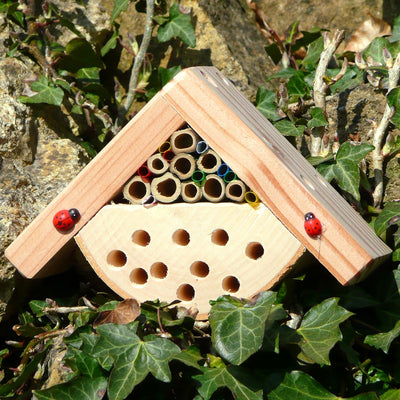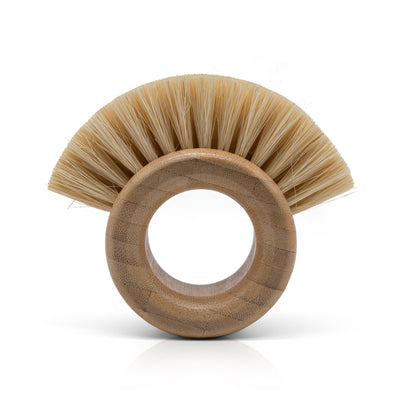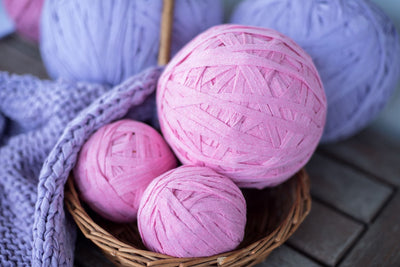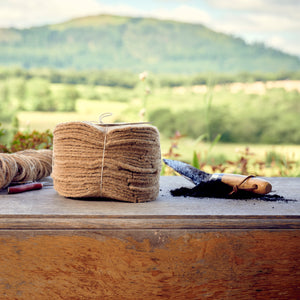How do the Self-Watering Spikes work?
They’re SUPER easy to use, just follow these four* simple steps:
- Soak the spike in water for 1-2 hours before you use it as this will open up the pores in the clay. This will prevent the spike from soaking up water too fast when you insert it into the soil later on.
- Find a long-necked bottle (such as an empty wine bottle) and fill it up with water. You can add nutrients as long as they are water-soluble (they must be water-soluble to allow them to pass through the clay spike).
- Place the watering spike on the neck of the now full bottle and flip it upside down so the spike is on the bottom and the bottle is pointing towards the ground.
- Finally, place the spike and water bottle into the soil and bury it until about 2 inches of the spike is visible above the soil. Be careful when pushing it in as you don’t want to break the spike – you might find it easier to dig out some of the soil first to start you off.
*Step...5? Okay, so, you could argue there are 5 steps. But this one is easy (and kind of obvious?!) – just make sure to refill your water bottle when it needs it if you don’t plan on going back to watering the plants yourself!
As well as soaking the spike in water before you use it, we would also recommend you water your plant beforehand too, so the soil is already moist to start with - this just stops water from leaving the spike straight away meaning it will last longer before you need to refill your bottle.
The spikes can be used both indoors and outdoors, with varying results. Because there are so many variables when it comes to how fast/slow you need to refill, it’s best to keep an eye on your plants the first time you use them. You’ll want to know just how much water your plants are drinking so you know they won’t go thirsty when you’re not around.
Tell me more about the Self-Watering Spikes
The Self-Watering Spikes are made from the red clay of Sri Lanka. Pottery is a long-standing tradition there and plays a major role in everyday life; being used for cooking pots and in the construction of houses.
Clay is a naturally permeable material, allowing water to slowly pass through. The moisture tension between the clay and soil determines how much water is pulled from the spike. The drier the soil, the more water is pulled through, and the opposite applies to wetter soil. An average size wine bottle (750ml) full of water can last around 7-10 days, depending on the type of plant, the humidity, and how wet or dry the soil is.
The smaller spikes are better suited to a smaller long-necked bottle.
When would I use them?
The Self-Watering Spikes are perfect for when you’re going away on a small trip and won’t be around to water your plants for a week or so, or maybe you want to take the guesswork out of watering them? All you would need to do would be to check your water bottle and if it’s empty, refill it!
As you might already know, here at Chimney Sheep we LOVE anything that’s good for the environment. These terracotta watering spikes not only get the job done, but they fit the bill of being eco-friendly and are perfect for plastic-free gardening. Not only are they made from natural clay, but they give a reason to use empty wine bottles (or any other long-neck bottles) instead of just throwing them into the recycling.
What is plastic-free gardening?
Plastic-free gardening is exactly what it sounds like – gardening with no plastic! More and more people are turning to biodegradable and environmentally friendly products instead of the common, plastic alternatives, and together, we should be encouraging others to do the same. Of course, it’s not easy to just start using no plastic, especially considering gardeners are surrounded by plastic, whether it be seed trays, plant pots, compost bags or other GYO (Grow Your Own) accessories. Even just cutting down on the amount of new plastic you use by reusing the plastic you already have and buying plastic-free where you can would be a great start towards removing all the plastic from your garden.
Alternatives to plastic are slowly becoming more and more readily available, whether that’s plant pots, seed trays, or the plants themselves (most of the time you can just pop into your local garden centre and buy plants or seeds in some sort of plastic container, but if you take a bit of time to shop around in the right season, you might just be able to get them plastic-free!).
How do the Self-Watering Spikes work?
They’re SUPER easy to use, just follow these four* simple steps:
- Soak the spike in water for 1-2 hours before you use it as this will open up the pores in the clay. This will prevent the spike from soaking up water too fast when you insert it into the soil later on.
- Find a long-necked bottle (such as an empty wine bottle) and fill it up with water. You can add nutrients as long as they are water-soluble (they must be water-soluble to allow them to pass through the clay spike).
- Place the watering spike on the neck of the now full bottle and flip it upside down so the spike is on the bottom and the bottle is pointing towards the ground.
- Finally, place the spike and water bottle into the soil and bury it until about 2 inches of the spike is visible above the soil. Be careful when pushing it in as you don’t want to break the spike – you might find it easier to dig out some of the soil first to start you off.
*Step...5? Okay, so, you could argue there are 5 steps. But this one is easy (and kind of obvious?!) – just make sure to refill your water bottle when it needs it if you don’t plan on going back to watering the plants yourself!
As well as soaking the spike in water before you use it, we would also recommend you water your plant beforehand too, so the soil is already moist to start with - this just stops water from leaving the spike straight away meaning it will last longer before you need to refill your bottle.
The spikes can be used both indoors and outdoors, with varying results. Because there are so many variables when it comes to how fast/slow you need to refill, it’s best to keep an eye on your plants the first time you use them. You’ll want to know just how much water your plants are drinking so you know they won’t go thirsty when you’re not around.
Tell me more about the Self-Watering Spikes
The Self-Watering Spikes are made from the red clay of Sri Lanka. Pottery is a long-standing tradition there and plays a major role in everyday life; being used for cooking pots and in the construction of houses.
Clay is a naturally permeable material, allowing water to slowly pass through. The moisture tension between the clay and soil determines how much water is pulled from the spike. The drier the soil, the more water is pulled through, and the opposite applies to wetter soil. An average size wine bottle (750ml) full of water can last around 7-10 days, depending on the type of plant, the humidity, and how wet or dry the soil is.
The smaller spikes are better suited to a smaller long-necked bottle.
When would I use them?
The Self-Watering Spikes are perfect for when you’re going away on a small trip and won’t be around to water your plants for a week or so, or maybe you want to take the guesswork out of watering them? All you would need to do would be to check your water bottle and if it’s empty, refill it!
As you might already know, here at Chimney Sheep we LOVE anything that’s good for the environment. These terracotta watering spikes not only get the job done, but they fit the bill of being eco-friendly and are perfect for plastic-free gardening. Not only are they made from natural clay, but they give a reason to use empty wine bottles (or any other long-neck bottles) instead of just throwing them into the recycling.
What is plastic-free gardening?
Plastic-free gardening is exactly what it sounds like – gardening with no plastic! More and more people are turning to biodegradable and environmentally friendly products instead of the common, plastic alternatives, and together, we should be encouraging others to do the same. Of course, it’s not easy to just start using no plastic, especially considering gardeners are surrounded by plastic, whether it be seed trays, plant pots, compost bags or other GYO (Grow Your Own) accessories. Even just cutting down on the amount of new plastic you use by reusing the plastic you already have and buying plastic-free where you can would be a great start towards removing all the plastic from your garden.
Alternatives to plastic are slowly becoming more and more readily available, whether that’s plant pots, seed trays, or the plants themselves (most of the time you can just pop into your local garden centre and buy plants or seeds in some sort of plastic container, but if you take a bit of time to shop around in the right season, you might just be able to get them plastic-free!).



































